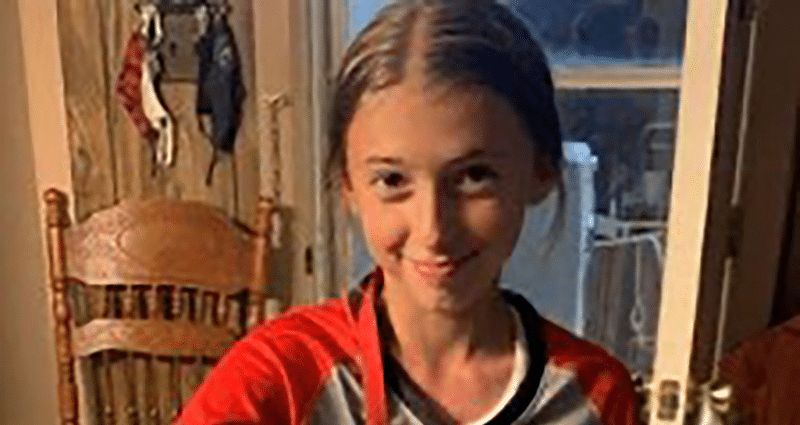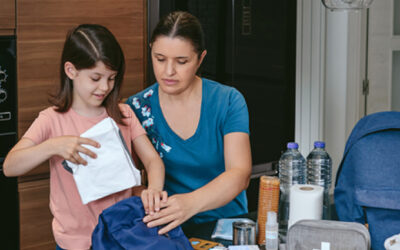Thirteen-year-old Paityn Martin has a dream.
She has her heart set on playing softball for highly competitive perennial powerhouse for Kaplan High School.
Right now, she’s honing her skills at second base by playing for both a recreational team- LA Hearts- and an all-star team- Voodoo. She’s on the field for about 50 games a year and often practices every day.
In March, though, while involved in the all-stars team, Paityn began to experience breathing difficulty that impacted her ability to play.
“It didn’t feel like I was going to quite pass out, but it felt like my heart was beating at a much faster pace and it was hard to catch my breath,” said Paityn, who also cheers and shows livestock in 4-H. “My lungs were pounding harder than usual. It was not the best feeling.”
She was affected most on base running.
“I was able to go full speed until I crossed about second and I started getting short of breath and it would slow me down,” she said.
Shane Roche, Paityn’s father and coach, wasn’t that worried the first time it happened because he was pushing the girls harder for all stars, practicing almost every day, and thought she was just adjusting to the increase in intensity.
“She’s always been very active,” he said. “She wakes at five o’clock every morning to feed her livestock and goes to bed at 10 at night. She’s either at softball practice, cheer or working her livestock. She’s 64 pounds soaking wet. She’s by far the smallest girl on the team and the most fit looking She shouldn’t be short of breath.”
When her shortness of breath happened a second time, Roche scheduled an appointment with a family practice doctor, who found troublesome results on an x-ray of Paityn’s lungs. He ordered a CT scan, diagnosed her with exercise-induced asthma, prescribed an inhaler and referred Paityn to Dr. Dean Edell, a pediatric pulmonary specialist at Our Lady of Lourdes Women’s & Children’s, partner of Our Lady of Lake Children’s Health.
The asthma inhaler, used right before practice or a game, helped somewhat and Paityn never sat out.
She saw Dr. Edell in late April and, after examining her and reviewing x-rays and CT scans, diagnosed her with dyspnea-a term for shortness of breath.
“If you were to run up three flights of stairs and someone said, ‘OK, let’s run up another flight of stairs,’ that feeling of just being air starved would probably be a good way to describe dyspnea,” Edell said.
It can be caused by asthma, lung disease, heart disease, obesity and even anxiety. Paityn’s was found to be caused by undiagnosed chronic lung disease.
Edell said that there are two common types of lung disease: obstructive, such as asthma, and restrictive, such as stiff lungs with poor elasticity.
Most children have obstructive disease; adults have both mixed and individual, he said. Paityn’s presented with significant restricted lung disease, which is uncommon. She also has a component of obstructive disease as well.
He explained it this way.
“Picture and old rubber band,” Edell said. “When you stretch it, it’s very brittle and it doesn’t have much elasticity. That’s emphysema. That’s restricted disease. You can’t really do too much for them. Obstructive disease is like a charley horse in your calf, when the smooth muscle spasms. Your lungs have smooth muscles around the airways and when it spasms you have to relax it. We treated her with an anti-inflammatory drug, a drug to open up her lungs, and a drug to stop her lungs from closing in the first place.”
Edell believes Paityn hadn’t experienced significant breathlessness before because her reserves didn’t become depleted until her competition level increased.
“When you’re 11, you’re competing against kids that have been playing sports for a couple years,” Edell said. “When you’re 12, kids are starting to drop off, getting more competitive each year, so the ones that are not really in good shape or conditioned or athletic are going to show signs of failing.”
Because Paityn’s underlying lung issues are permanent- one lung is smaller than the other- she will always have to deal with dyspnea and will probably stay at the high end of mild to moderate limitation on a pulmonary function scale. She’s on a regimen that has her using one inhaler twice a day every day and another before practice or a game.
“I can make it a lot longer, probably all the way to home full speed,” she said.
The good news for Paityn, though, is her medications are keeping her dream of playing second base in high school ball alive.
For more than 35 years and counting, Our Lady of Lourdes Women’s & Children’s Hospital has been the area’s leader in pediatric specialty care. We are home to the most pediatric specialists and the region’s only Pediatric Intensive Care Unit backed by more than 300 specialists in the statewide Our Lady of the Lake Children’s Health Network. Visit LourdesRMC.com to learn more.




